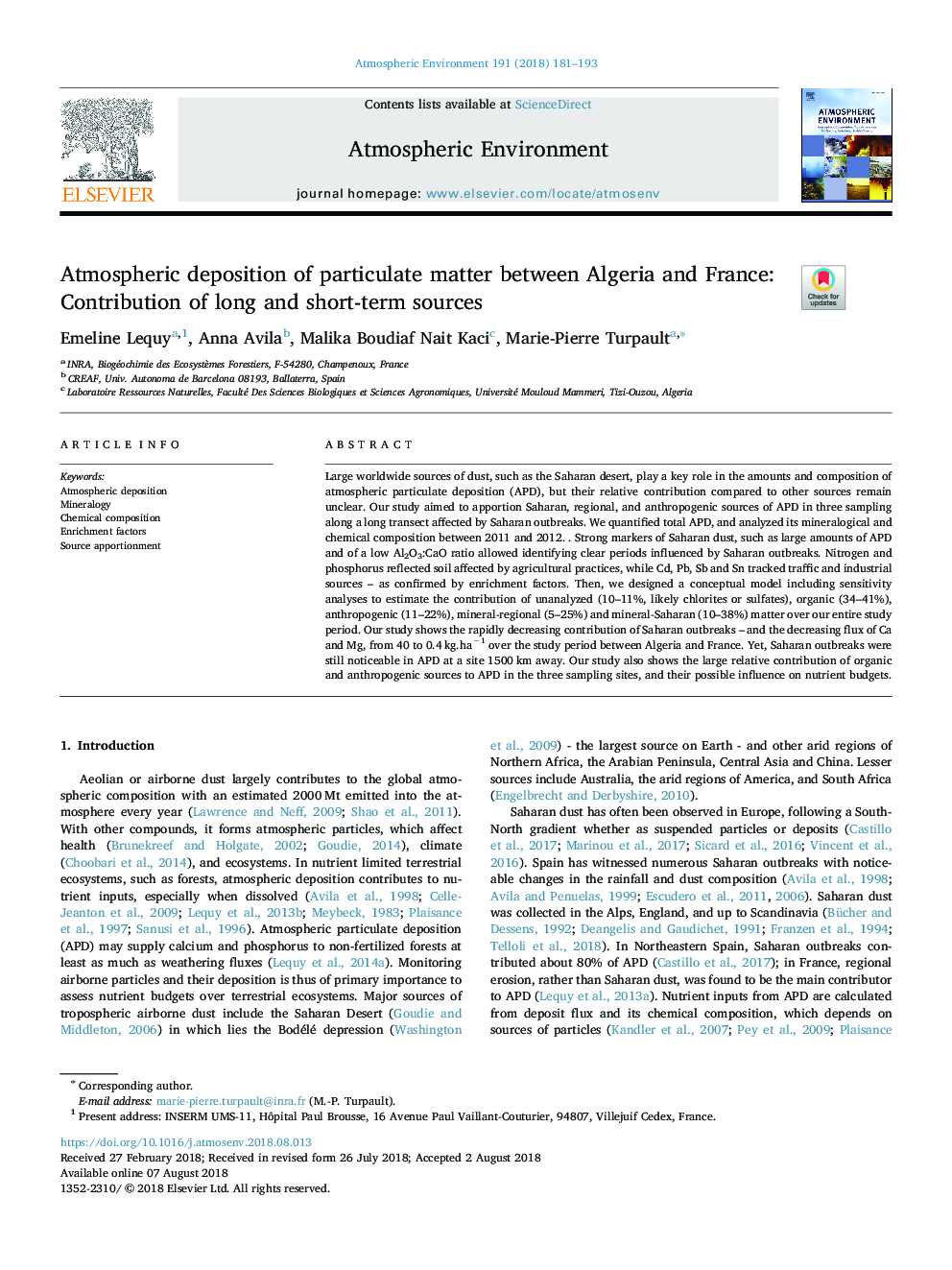| Article ID | Journal | Published Year | Pages | File Type |
|---|---|---|---|---|
| 8863395 | Atmospheric Environment | 2018 | 13 Pages |
Abstract
Large worldwide sources of dust, such as the Saharan desert, play a key role in the amounts and composition of atmospheric particulate deposition (APD), but their relative contribution compared to other sources remain unclear. Our study aimed to apportion Saharan, regional, and anthropogenic sources of APD in three sampling along a long transect affected by Saharan outbreaks. We quantified total APD, and analyzed its mineralogical and chemical composition between 2011 and 2012. . Strong markers of Saharan dust, such as large amounts of APD and of a low Al2O3:CaO ratio allowed identifying clear periods influenced by Saharan outbreaks. Nitrogen and phosphorus reflected soil affected by agricultural practices, while Cd, Pb, Sb and Sn tracked traffic and industrial sources - as confirmed by enrichment factors. Then, we designed a conceptual model including sensitivity analyses to estimate the contribution of unanalyzed (10-11%, likely chlorites or sulfates), organic (34-41%), anthropogenic (11-22%), mineral-regional (5-25%) and mineral-Saharan (10-38%) matter over our entire study period. Our study shows the rapidly decreasing contribution of Saharan outbreaks - and the decreasing flux of Ca and Mg, from 40 to 0.4â¯kg.haâ1 over the study period between Algeria and France. Yet, Saharan outbreaks were still noticeable in APD at a site 1500â¯km away. Our study also shows the large relative contribution of organic and anthropogenic sources to APD in the three sampling sites, and their possible influence on nutrient budgets.
Related Topics
Physical Sciences and Engineering
Earth and Planetary Sciences
Atmospheric Science
Authors
Emeline Lequy, Anna Avila, Malika Boudiaf Nait Kaci, Marie-Pierre Turpault,
